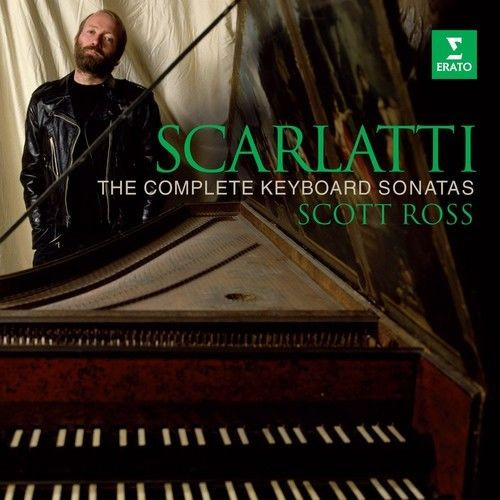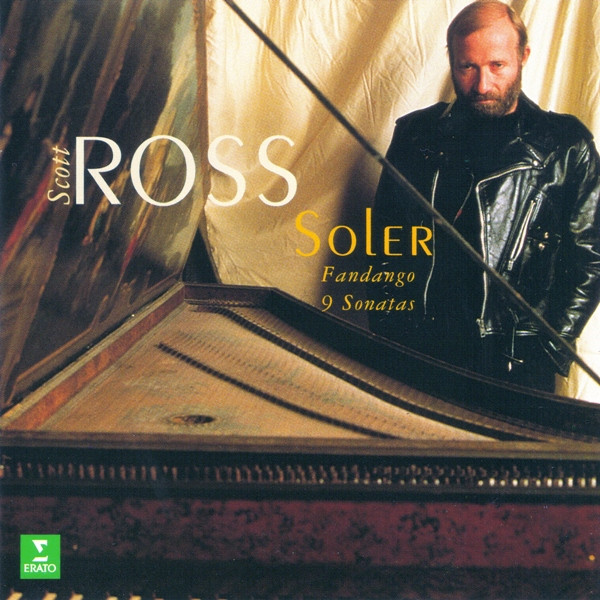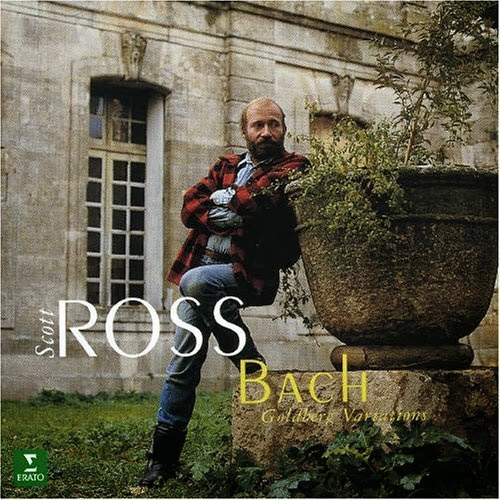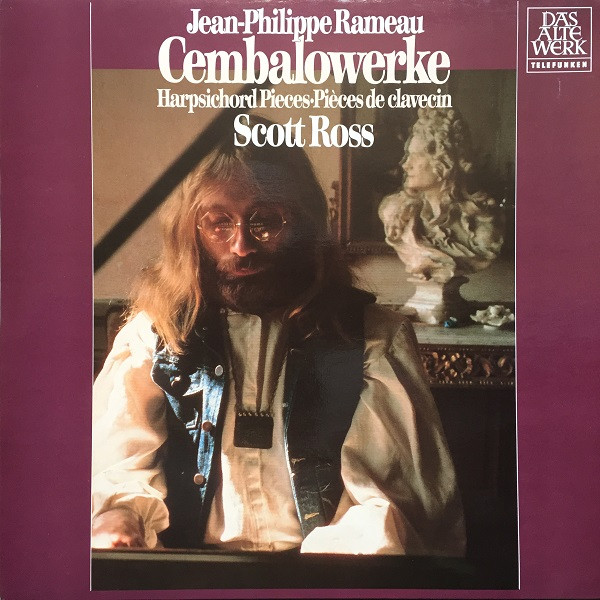This site is Free & Ad-Free! If you find this piece worthwhile, please donate via PayPal to support it & independent Art writing. You can also support it by buying Art & books! Details at the end. Thank you.
Written by Kenn Sava (Photographs from Discogs.com)
Today, as NYC Pride Parade goes on outside, the late Scott Ross has been on my mind. For those who may not know him, Mr. Ross was a harpsichordist who was one of the great interpreters of Baroque Music of our, or any, time. He almost single-handedly, using two hands, brought the harpsichord back into the conversation from decades of neglect in Classical Music.
Scott Ross died of HIV/AIDS-related causes in June, 1989, but it never defeated him.
Born in Pittsburgh in 1951, he moved to France with his mother after the death of his father in 1964, Living in France the rest of his life, he never became a citizen, and had stopped making U.S. Social Security payments, a combination that conspired to leave him not eligible for medical care. He was forced to look to his circle for support and to care for him at home until he died.
Scott Ross appeared on the Music scene at a perfect moment. Beginning in the 1960s, a group of dedicated Baroque Musicians and scholars had been making waves in the world of recording by performing the Music of the Baroque masters on instruments that existed at the time they wrote their Music. This upset the apple cart of tradition where the world had gotten used to hearing this Music played on modern instruments, including the piano (and the modern orchestra for that matter), which didn’t exist at the time of the earlier composers. They had written their Music for the “Klavier,” usually a harpsichord. As the piano was perfected over hundreds of years it assumed the central place in Music-making, leaving the harpsichord to museums, until the synthesizer came along to make the piano take a back seat. So, Scott Ross, at once, continued this “original instrument” movement in Baroque Music, and was, again, something entirely new. Most modern listeners had little, if any, experience with hearing the harpsichord. The surprise was furthered by his “natural” appearance at his concerts. He showed up dressed as he was, as you can see on his album covers shown in this piece.
Beyond all of this, however, Scott Ross always put the Music first. He was a brilliant interpreter of every composer he turned his talent to, whose recordings stand up against anyone else’s- before, during, or after his lifetime. Even those of Glenn Gould, who I love, and Mr. Ross had problems with.
“When all you do is play music from morning till night you end up unable to hear it properly. It is extremely important to think about other things, to have other interests, in order to bring a new vision to your work. Discovering new things gives meaning to my life and when I become interested in something there are no half-measures. For example, the interest I had as a child in pebbles goes back as far as my interest in music, and it has never left me,” Scott Ross quoted in the liner notes to The Art of Scott Ross, CBC Records.
In addition to his Musical gifts, Mr. Ross was a passionate grower of orchids who was fascinated with “strange ones,” not the type you’d see in a flower store. He created an early computerized database of those he cross-bred. He was also a Photographer with his own dark room, an authority on edible mushrooms; volcanoes and minerals, cooking and home renovation and carpentry, were among his many other interests as something of a true “renaissance man.”
Today, and for much of his life, he was and is, perhaps, best known for his first-ever recording of the complete Sonatas of Domenico Scarlatti. After first showing symptoms of HIV in 1983 (just two years after the identification of the virus and in the infancy of treatment), he realized that he had a fatal illness. Yet, he kept working and producing remarkable results. Somehow he found the strength & fortitude to enable him to achieve something never before done. He undertook ninety-eight recording sessions, producing 8,000 takes, between June, 1984 and September, 1985 in Paris, Avignon and Château d’Assas recording the first-ever collection of Scarlatti’s compete keyboard sonatas which were released on THIRTY-FOUR CDs.

“An heroic achievement,” BBC Music Magazine. Seen here is the cover of the 2014 Erato reissue.
That’s just staggering to consider- for someone in perfect health. We’re talking about FIVE HUNDRED FIFTY-FIVE sonatas! Today, almost 40 years later, they are still widely considered “definitive” recordings. In the time since Mr. Ross recorded his cycle only one other complete cycle by one Musician is known to me. (One other cycle features different pianists on each disc.) Even more remarkably, he revealed in an interview- “When I suggested this marathon undertaking to Erato and Radio France, I simply did not know most of the 555 sonatas. I had to work like a madman. I was anxious to make the recordings quickly, not only because of the three-hundredth anniversary (of Scarlatti’s birth in 1685) and the broadcasting requirements of Radio France, but also in order to stay in the spirit of Scarlatti. It is very likely that al the sonatas were written quickly1.”
Mr. Ross was notorious for breaking boundaries and doing things his own way. His “natural appearance” at concerts was something never before seen in an austere classical concert hall: be it in a leather biker jacket, or wearing flannel, looking a bit like John Lennon, or in a knit cap, as he is below in his final concert, the Soundtrack for this piece, performing Rameau’s “La Livri” in Rome on April 6, 1989, just 8 weeks before he died.
It’s absolutely amazing to me that his skill remained undiminished right to the end in spite of all he was going through, as you can see and hear below in one of his few video performances, which is also evidenced on every one of the recordings he made. A true testament to his strength and perseverance. Even AIDS couldn’t overcome his brilliance.
NighthawkNYC.com has been entirely self-funded & ad-free for over 8 years, during which 300 full length pieces have been published! If you’ve found it worthwhile, PLEASE donate to allow me to continue below. Thank you, Kenn.
You can also support it by buying Art, Art & Photography books, and Music from my collection! Art & Books may be found here. Music here and here.
Written & photographed by Kenn Sava for nighthawknyc.com unless otherwise credited. To send comments, thoughts, feedback or propositions click here. Click the white box on the upper right for the archives or to search them. Subscribe to be notified of new Posts below. Your information will be used for no other purpose.
- Interview in the booklet in the Scarlatti CD set ↩




